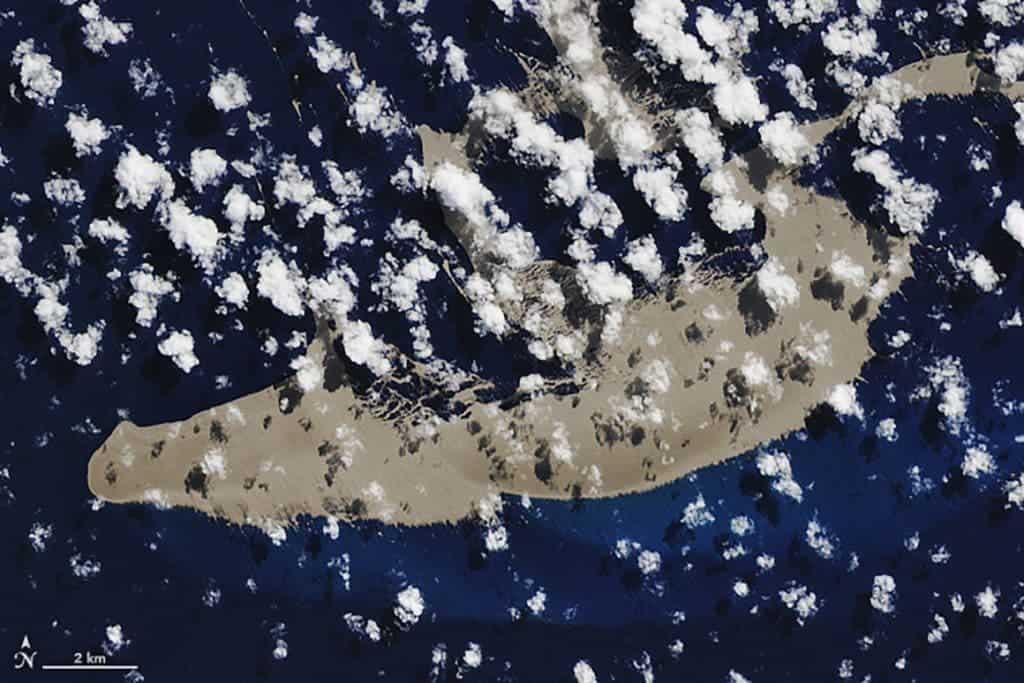The city-sized island is made of pumice — a volcanic rock so porous and light that it floats on water. It stretches over 150 square km (58 square miles) and was produced in an underwater eruption near the island of Tonga.

Pumice islands such as this one are not uncommon in the area, though this one is unusually large. The giant formation was first spotted by satellite imagery on the water’s surface on August 9th, confirmed by sailors in the area. But the most remarkable observations came from the crew of the Australian adventure catamaran ROAM. As ROAM found itself surrounded by a sea of floating rocks “completely covering the ocean surface”.
“Rubble slick made up of rocks from marble to basketball size such that water was not visible,” the sailors wrote in a Facebook post. “The rubble slick went as far as we could see in the moonlight and with our spotlight.”
Shannon Lenz, another sailor working in the area, also captured the stunning phenomenon and posted a video on Youtube.
“We sailed through a pumice field for 6–8 hours, much of the time there was no visible water,” Lenz wrote. “It was like ploughing through a field. We figured the pumice was at least 6 inches thick.”
By now, you’re probably wondering what this has to do with the Great Coral Reef. As the stone island drifts towards Australia, it will become home to countless marine creatures, Queensland University of Technology geologist Scott Bryan says.
“There’s probably billions to trillions of pieces of pumice all floating together and each piece of pumice is a vehicle for some marine organism,” Bryan said. “When it gets here, it’ll be covered in a whole range of organisms of algae and barnacles and corals and crabs and snails and worms.”
“This is a potential mechanism for restocking the Great Barrier Reef,” he adds. “Based on past pumice raft events we have studied over the last 20 years, it’s going to bring new healthy corals and other reef dwellers to the Great Barrier Reef.”
In other words, the pumice island could act as a traveling ecosystem, ultimately restocking the reef with healthy microorganisms and even corals, something which the Great Reef desperately needs. More than half of the reef has been destroyed by bleaching events, as a result of rising temperatures and ocean acidification. While this sort of event (and local intervention) can reduce or delay the damage, without an accompanying shift in global trends — the Great Barrier Reef is probably doomed.
It’s up to each and every one of us to bring forth that change.


